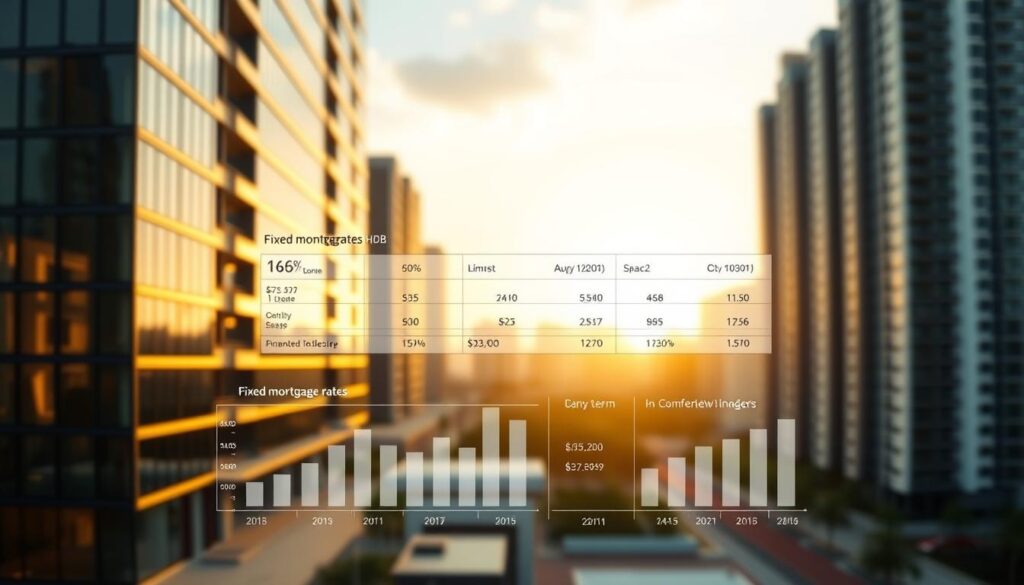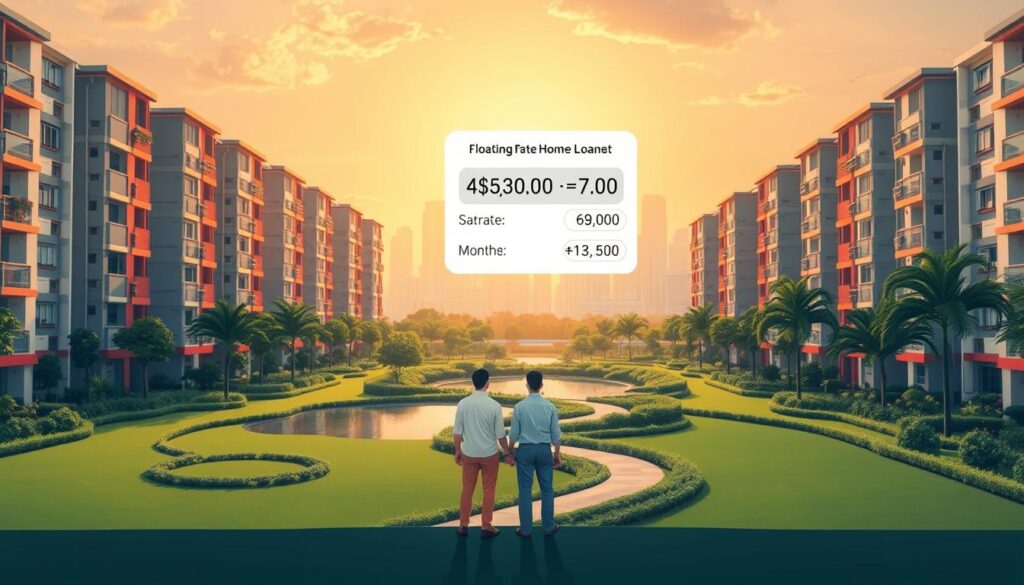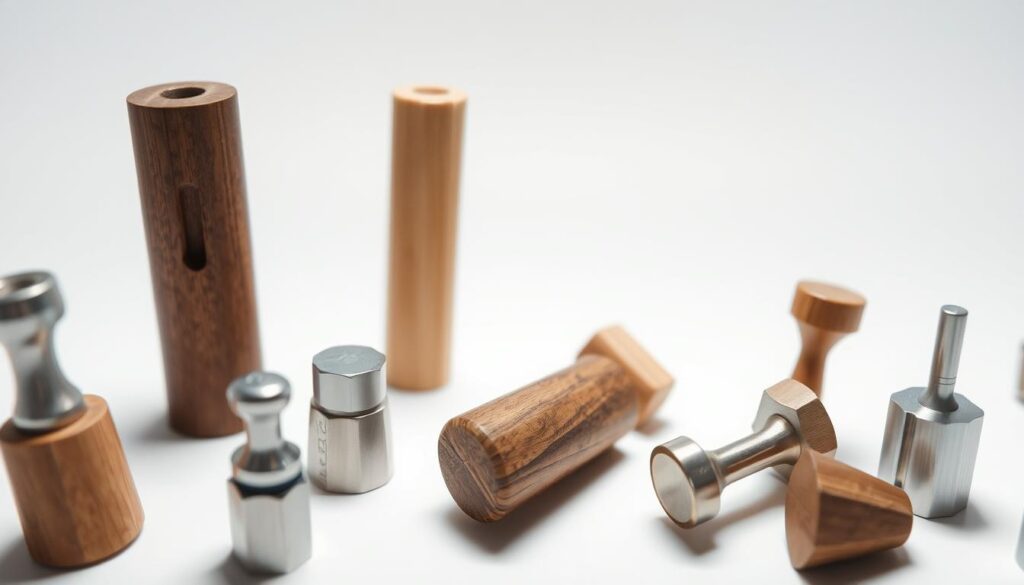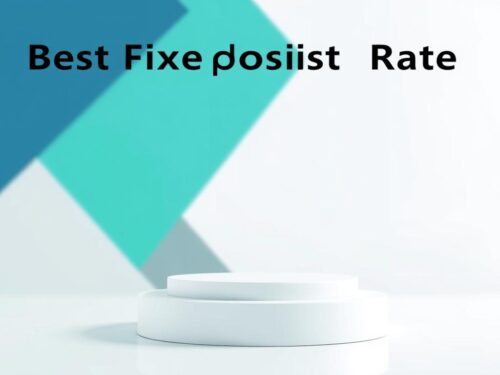Securing a favorable home loan can make a big difference in your financial planning. In Singapore, lenders offer attractive interest rates, sometimes as low as 1-1.5%, depending on market conditions. Whether you’re buying a private property or an HDB flat, understanding your options is key.
Banks and financial institutions provide different packages, including fixed or floating loan interest rates. The shift from SIBOR to SORA as the main benchmark has also influenced financing choices. Comparing terms like lock-in periods, minimum loan amounts, and cash rebates helps you find the right fit.
Using a mortgage calculator or consulting a broker can simplify the process. This ensures you get a deal tailored to your needs while keeping costs manageable.
Key Takeaways
- Singapore offers competitive financing options with low-interest cycles.
- Fixed and floating rates provide flexibility for different financial goals.
- SORA has replaced SIBOR as the primary benchmark for loans.
- Comparing lock-in periods and loan terms helps secure better deals.
- Mortgage calculators and brokers assist in finding personalized solutions.
Introduction to Mortgage Rates in Singapore
Interest rates play a pivotal role in property affordability. Even small differences in percentages can translate to significant savings over a 25-year home loan period. Singapore’s financial landscape offers both fixed and floating rate options to suit different budgets.
The Monetary Authority of Singapore (MAS) regulates loan interest rates through measures like the Total Debt Servicing Ratio (TDSR). This ensures borrowers don’t overextend themselves financially. Since 2024, SORA has become the primary benchmark, replacing the older SIBOR system.
Why Mortgage Rates Matter
A 0.25% rate difference might seem small, but it adds up. For a S$500,000 property, this could mean S$50,000 in extra interest payments over two decades. That’s why comparing packages from different banks is essential.
| Rate Type | HDB Flats | Private Properties |
|---|---|---|
| Fixed Rates | 2.30%-2.55% | 2.30%-2.55% |
| Floating Rates | 3M SORA +0.25% | 3M SORA +0.75% |
MAS rules cap housing loan repayments at 55% of monthly income. This TDSR framework protects borrowers while maintaining market stability. First-time buyers should also note the Loan-to-Value (LTV) ratios that affect downpayment requirements.
Overview of the Singapore Mortgage Market
Three major banks dominate 80% of the market: DBS, UOB, and OCBC. However, over 10 lenders compete actively, offering unique packages. HDB flats account for 24% of all housing loans, with the rest going to private residences.
“Progressive disbursement helps buyers of uncompleted properties manage payments during construction phases.”
Global factors like US Federal Reserve rate changes influence local interest rates. This makes monitoring economic trends valuable when planning your home loan strategy. Many borrowers now prefer SORA-pegged packages for their transparency.
Types of Home Loans in Singapore
Choosing the right financing option can shape your property journey in Singapore. Whether you’re buying a resale flat or a new condo, loan packages vary by property type and buyer profile. Here’s a breakdown of the most common options.
Residential Completed Resale Properties
For existing homes, buyers can opt for fixed or floating home loans. Fixed rates offer stability, while floating rates may start lower but fluctuate with market trends. Most banks provide these options for both HDB flats and private properties.
Building-Under-Construction (BUC) Properties
BUC loans use progressive disbursement, meaning payments align with construction milestones. These packages typically feature floating rates only, often pegged to SORA. Note that refinancing mid-construction may incur fees of 0.75%–1.5%.
Bank Loan vs. HDB Loan
HDB loans suit citizens earning ≤S$14,000 monthly, with fixed 2.6% interest. Bank loans start at 1.8% but require stricter eligibility checks. Once you switch from HDB to a bank loan, the decision is irreversible.
| Feature | HDB Loan | Bank Loan |
|---|---|---|
| Max LTV Ratio | 80% | 75% |
| Income Ceiling | S$14,000 | None |
| Rate Type | Fixed (2.6%) | Fixed/Floating |
For commercial properties, financing differs—personal loans cover smaller units, while corporate loans suit larger investments. Always compare terms like prepayment penalties and lock-in periods.
Fixed vs. Floating Home Loan Rates
Locking in a rate or riding market trends—each option has distinct advantages. Your decision affects monthly payments, long-term costs, and financial flexibility. Here’s how to weigh stability against adaptability.
Understanding Fixed Rates
Fixed-rate loans lock your interest rate for 1–5 years, typically 0.25%–0.5% higher than floating options. Popular for predictability, 85% of borrowers choose 2-year terms. Payments stay constant, shielding you from market hikes.
After the lock-in period, rates reset to the bank’s prevailing loan rates. Prepayment penalties (1%–1.5% of outstanding sums) apply if you refinance early. Example: A 3-year fixed at 2.47% suits buyers prioritizing budget certainty.
Understanding Floating Rates
Floating-rate loans follow benchmarks like 3M SORA plus a spread (0.25%–1.00%). They start lower but fluctuate with economic shifts. Ideal for risk-tolerant borrowers or short-term holders.
Banks often allow conversions to fixed terms mid-loan, sometimes for a fee. Example: SORA + 0.60% could save money during low-rate cycles but requires monitoring trends.
| Feature | Fixed Rate | Floating Rate |
|---|---|---|
| Stability | High | Low |
| Initial Cost | Higher | Lower |
| Flexibility | Limited | High |
“Fixed rates suit planners; floating rates reward market watchers. Match your choice to your financial personality.”
Best Fixed Home Loan Rates for HDB Properties
HDB buyers have unique financing needs that fixed-rate packages address effectively. These plans offer predictable payments, shielding homeowners from market volatility. Two popular structures—1+1Y and 3Y fixed terms—cater to different financial goals.

1+1Y Fixed Rates
The 1+1Y structure locks your interest at 2.53% for the first two years. After that, it shifts to a floating rate (typically SORA +1.00%). This suits buyers planning to refinance or sell within 24 months.
Minimum loan amounts range from $300,000 to $500,000. Some lenders offer free conversions to other packages after 12 months, adding flexibility.
3Y Fixed Rates
A 3-year fixed term maintains 2.47% throughout, ideal for long-term stability. Though slightly lower than 1+1Y rates, it lacks early conversion perks. Post-fixed periods also revert to SORA-pegged rates.
| Feature | 1+1Y Fixed | 3Y Fixed |
|---|---|---|
| Initial Rate | 2.53% | 2.47% |
| Flexibility | Higher (12-month conversion) | Lower |
| Post-Fixed Rate | SORA +1.00% | SORA +1.00% |
Refinancing rebates up to $2,000 are common. These cash incentives help offset switching costs. Compare them against percentage-based subsidies for the best deal.
“Fixed rates simplify budgeting for HDB owners—no surprises, just steady payments.”
Best Fixed Home Loan Rates for Private Properties
Private property buyers need stable financing solutions in today’s market. Fixed-rate packages provide predictable payments, ideal for condos or landed homes. Major banks offer competitive terms, with slight variations in rates and perks.
Two-Year Fixed Packages
Locking in for 24 months shields borrowers from rate hikes. Current offers range from 2.35% to 2.50%, with minimum loans of $500,000. DBS leads with a 2.35% rate, while UOB and OCBC hover near 2.45%.
Refinancing rebates of $1,800–$2,800 help offset switching costs. High-net-worth clients may negotiate corporate discounts (0.10%–0.15% off). Always check lock-in clauses—some penalize early exits.
1+1 Year Fixed Plans
These hybrid packages start with a fixed rate (2.30%–2.48%) for the first year. The second year often shifts to a floating rate, like 3M SORA +0.75%. Suitable for buyers anticipating refinancing or selling soon.
| Bank | 2Y Fixed Rate | 1+1Y Fixed Rate |
|---|---|---|
| DBS | 2.35% | 2.30% |
| UOB | 2.45% | 2.40% |
| OCBC | 2.50% | 2.48% |
“Fixed rates simplify budgeting for luxury properties—ideal for long-term investors.”
Post-fixed periods typically convert to floating rates automatically. Review terms carefully to avoid surprises. For larger properties ($1M+), negotiate tailored packages with relationship managers.
Floating Home Loan Options for HDB Properties
For HDB flat owners, floating-rate packages tied to SORA offer flexibility and potential savings. These plans adapt to market shifts, starting with lower interest before adjusting annually. Borrowers benefit from transparency, as SORA reflects actual lending costs.

3M SORA + 0.60%
This popular option locks the spread at 0.60% for the first year. Payments stay predictable initially, with rates recalculated quarterly. Minimum loan amounts start at $200,000, ideal for smaller HDB flats.
After Year 3, the spread increases to SORA +1.00%. Borrowers should factor this into long-term budgets. Some banks waive conversion fees if you switch to fixed rates within 12 months.
3M SORA + 0.65%
A slightly higher spread (0.65%) may come with perks like $2,000 refinancing subsidies. These cash incentives offset future switching costs. Lock-in periods typically last 24 months, with penalties for early exits.
| Feature | 3M SORA +0.60% | 3M SORA +0.65% |
|---|---|---|
| Initial Rate | Lower (0.60%) | Higher (0.65%) |
| Refinancing Subsidy | None | $2,000 |
| Post-Year 3 Spread | +1.00% | +1.00% |
“Floating rates suit HDB buyers who monitor market trends and plan to refinance strategically.”
Key considerations include minimum income requirements (often $4,500/month) and loan tenure caps (up to 25 years). Use a home loan calculator to compare total interest across different spreads.
Floating Home Loan Options for Private Properties
Private property owners can benefit from flexible financing tied to SORA. These packages adjust with market conditions, offering potential savings when interest trends downward. Understanding the differences between 1M and 3M SORA pegs helps you choose wisely.
3M SORA + 0.60% Packages
This option provides stability with quarterly rate adjustments. The initial spread of 0.60% makes it competitive for larger loans. After Year 1, the spread may increase, so review terms carefully.
Minimum amounts often start at $500,000. Some lenders offer cash rebates up to $2,500 for loans exceeding $1 million. Lock-in periods typically last 24 months.
1M SORA + 0.25% Packages
With monthly adjustments, this peg responds faster to market shifts. The lower 0.25% spread makes it attractive initially. Unique features include no lock-in clauses, allowing easier refinancing.
| Feature | 3M SORA +0.60% | 1M SORA +0.25% |
|---|---|---|
| Rate Adjustment | Quarterly | Monthly |
| Initial Spread | Higher (0.60%) | Lower (0.25%) |
| Flexibility | 24-month lock-in | No lock-in |
“1M SORA suits market-savvy borrowers, while 3M SORA offers more predictability for long-term owners.”
Current SORA trends show 1-month rates at 2.34% and 3-month at 2.63%. Consider your risk tolerance when choosing between faster-adjusting or more stable options.
Premium clients may negotiate better terms, including higher rebates or reduced spreads. Always compare total costs over your expected loan tenure.
Types of Mortgage Loan Pegs
Understanding how your home loan interest is calculated helps you make smarter financial decisions. In Singapore, banks use different benchmarks—like SORA, BOARD, or FHR—to determine your rate. Each peg works differently, affecting your payments and long-term costs.

Singapore Overnight Rate Average (SORA)
SORA is now the standard benchmark, replacing SIBOR in 2024. The Monetary Authority of Singapore (MAS) publishes it daily at 9 AM, based on a volume-weighted average of overnight transactions.
Unlike SIBOR, SORA reflects actual lending costs, making it more transparent. For example, a loan pegged to 3M SORA +0.75% adjusts quarterly, with rates tied to market trends.
BOARD Rate
BOARD rates are set internally by banks, often changed quarterly. These lack transparency, as each bank calculates them differently. Historically, they’ve been slower to drop than market-linked pegs.
For instance, during low-interest cycles, BOARD rates stayed higher than SORA. This opacity makes comparing offers across lenders challenging.
Fixed Deposit Home Rate (FHR)
FHR ties your rate to a bank’s fixed-deposit promotions. DBS’s FHR8, currently at 3.20%, is a common example. While stable short-term, FHRs can spike—like in 2022, when some increased fivefold.
| Peg Type | Pros | Cons |
|---|---|---|
| SORA | Transparent, market-responsive | Fluctuates with economic shifts |
| BOARD | Predictable adjustments | Less competitive during rate drops |
| FHR | Stable initial periods | Sudden hikes possible |
“FHR suits risk-averse borrowers, while SORA rewards those who track market trends.”
Key Players in the Singapore Mortgage Market
Navigating Singapore’s home financing landscape requires understanding the major players. Local banks dominate, but foreign lenders and non-bank institutions also offer competitive loan packages. Here’s how the top providers compare.
DBS Home Loans
DBS holds a 35% market share, backed by its digital tools like the Home Loan Advisor. Their fixed-rate packages start at 2.35%, with floating options pegged to 3M SORA +0.60%. Unique perks include instant online approvals.
For larger loans (S$1M+), relationship managers offer tailored spreads. The bank’s 5-year fixed-term option suits long-term planners, though early exit fees apply.
UOB Home Loans
UOB’s Flexi Fixed Rate package blends stability with flexibility. Borrowers lock in rates for 1–3 years, then switch to floating terms. Current promotions include S$2,000 cashback for refinancing.
Their BOARD-pegged loans appeal to those wary of market volatility. However, spreads are less transparent than SORA-based options.
OCBC Home Loans
OCBC’s Blue Chip Home Loan rewards buyers of premium properties. Rates dip to 2.30% for loans above S$2M, with waived legal fees. The bank also offers a unique 10-year fixed-rate option.
Smaller loans (S$200K–S$500K) qualify for SORA +0.65% packages. OCBC’s mobile app provides real-time repayment simulations.
Foreign & Non-Bank Lenders
HSBC Premier clients access exclusive rates, like 1M SORA +0.25%. Hong Leong Finance caters to niche buyers with loans for aged properties or mixed-use units.
Brokers partner with 10+ lenders, including Maybank and CIMB, to match borrowers with tailored solutions. Always compare lock-in periods and prepayment clauses.
“Local banks lead in market share, but foreign lenders often undercut them on short-term rates.”
How to Qualify for a Mortgage in Singapore
Getting approved for a home loan in Singapore involves meeting specific financial criteria. Lenders evaluate your income, debts, and creditworthiness to determine eligibility. Preparing the right documents and understanding key rules like TDSR can speed up the process.

Loan Eligibility Requirements
Singapore’s Total Debt Servicing Ratio (TDSR) caps repayments at 55% of your monthly income. Banks apply a 4% stress test to ensure affordability if rates rise. For example:
| Monthly Income | Max Monthly Repayment (55%) | Stress-Tested Rate (4%) |
|---|---|---|
| S$6,000 | S$3,300 | S$2,640 |
| S$10,000 | S$5,500 | S$4,400 |
Self-employed applicants may qualify based on assets (30% of savings divided over 48 months). Ensure your credit score exceeds 1,800 for better rates.
Documents You’ll Need
Submit these for a smooth application:
- Latest 12 months’ payslips or Notice of Assessment (NOA)
- Option to Purchase (OTP) or Sale Agreement
- Tenancy agreements (for rental income consideration)
Digital tools like MyInfo auto-fill forms using Singpass data. Foreigners need additional paperwork, like employment passes.
Using a Mortgage Calculator
Estimate your loan amount and repayments with tools like Karl’s Mortgage Calculator. Input:
- Property price and downpayment
- Preferred loan tenure (up to 30 years)
- Fixed or floating rate
“Calculate repayments at 4% above your offered rate to buffer against future hikes.”
Compare results across lenders to find the best fit for your savings and financial goals.
Understanding Loan-to-Value (LTV) Ratio
Your downpayment and borrowing power depend heavily on the Loan-to-Value (LTV) ratio. This percentage determines how much you can borrow against a property’s price. Banks and HDB set different limits, affecting your upfront cash requirements.
Maximum LTV for Residential Properties
For private properties, banks cap loans at 75% of the purchase price or valuation (whichever is lower). This means a 25% downpayment is mandatory. At 5% must be in cash, while 20% can come from CPF or savings.
Example: A S$1M condo requires S$250,000 upfront. Only S$50,000 needs to be cash; the rest can leverage CPF funds.
| Property Type | Max LTV | Min Cash Downpayment |
|---|---|---|
| Private (Bank Loan) | 75% | 5% |
| HDB (Bank Loan) | 75% | 5% |
| HDB (HDB Loan) | 80% | 0%* |
*HDB loans waive cash if using CPF for the full 20%.
LTV for HDB Flats
HDB offers higher LTV (80%) but adds the Mortgage Servicing Ratio (MSR). This limits monthly repayments to 30% of gross income. For a S$500,000 flat, the loan could reach S$400,000, but MSR may reduce this based on earnings.
“First-time buyers often underestimate ABSD—it’s 20% for foreigners and 5-15% for locals buying second properties.”
Additional Buyer’s Stamp Duty (ABSD) applies atop purchase costs. Always factor this into budgets. Use a credit assessment tool to check eligibility before house hunting.
In-Principle Approval (IPA) for Home Loans
Streamlining the home-buying journey starts with obtaining an IPA—a crucial step often overlooked. This pre-qualification certificate shows sellers and agents your borrowing power. Banks assess your financial health before issuing it, typically within 3 working days.
What Does an IPA Offer?
An IPA acts like a financial compass, valid for 30 days. It outlines:
- Your maximum loan amount based on income and debts
- Estimated monthly repayments at current rates
- Special packages you qualify for
Having one strengthens your position when making an Offer to Purchase (OTP). Sellers view IPA-backed buyers as serious customers with fewer financing risks.
Securing Your IPA Digitally
Most applications now use Singpass’s MyInfo for instant data retrieval. Follow these steps:
- Log in via your bank’s online portal
- Select “Pre-Approval” and authorize MyInfo access
- Review auto-filled income and employment details
“IPAs cut negotiation time by 40%—they’re proof you can secure funds.”
Foreigners need extra documents like Employment Pass copies and tax statements. Banks run credit reports through CBS (Credit Bureau Singapore), so clear any outstanding disputes first.
| Feature | IPA | Full Approval |
|---|---|---|
| Validity | 30 days | Until disbursement |
| Documentation | Basic income proof | Full property details |
| Binding? | No | Yes |
Tip: Apply for IPAs from multiple lenders to compare terms. Just space requests 2 weeks apart to avoid credit score dips.
HDB Loan Eligibility (HLE) Letter
Before purchasing a home in Singapore, securing an HDB Loan Eligibility (HLE) letter is essential. This document confirms your borrowing capacity for public housing, ensuring a smoother loan approval process. Unlike bank loans, HDB financing offers fixed rates and higher LTV ratios.
How to Apply for HLE
Submit your application via the HDB e-service portal. You’ll need:
- NRIC and income documents (CPF statements, payslips)
- Details of existing loans or debts
- Property information (for BTO or resale)
Processing takes 14 days. HDB assesses factors like:
- Monthly income (ceiling: S$14,000)
- Age (max loan tenure: 25 years for buyers ≤65)
- No private property ownership
Validity of HLE Letter
An HLE letter remains valid for 6 months. If your housing purchase extends beyond this period, renew it early to avoid delays. For BTO applicants, the HLE must cover the entire waiting period (typically 3–5 years).
| Feature | HLE Letter | Bank IPA |
|---|---|---|
| Validity | 6 months | 30 days |
| Processing Time | 14 days | 3 days |
| Income Ceiling | S$14,000 | None |
“An HLE letter is non-negotiable for BTO buyers—apply as soon as you receive your queue number.”
Key differences: HLE letters require stricter income checks, while bank IPAs focus on credit scores. Always verify your loan terms before committing.
Comparing Bank Loans and HDB Loans
Homebuyers in Singapore face a critical decision: bank loans or HDB financing. This choice affects your cash flow, long-term interest payments, and flexibility. Understanding the differences helps you maximize savings while meeting your property goals.
Interest Rate Differences
HDB offers a fixed 2.6% interest rate for the entire loan tenure. Bank housing loans start lower (from 1.8%) but use floating rates tied to SORA. Over 25 years, this 0.8% gap could mean S$85,000 extra for a S$500,000 property.
Fixed HDB rates provide stability during market volatility. Bank packages offer initial savings but require monitoring rate trends. Refinancing options also differ—banks allow switches every 2-3 years, while HDB loans lock you in permanently.
Downpayment Requirements
HDB requires 20% downpayment, fully payable through CPF. Bank loans need 25% down, with at least 5% in cash. This makes HDB financing more accessible for buyers with limited liquid savings.
| Feature | HDB Loan | Bank Loan |
|---|---|---|
| Downpayment | 20% (CPF only) | 25% (5% cash) |
| Early Repayment | No penalty | 1.5% fee common |
| Refinancing | Not allowed | Every 24 months |
Young couples often prefer HDB loans for their predictability. Upgraders typically choose bank housing loans to leverage lower initial rates. Consider these scenarios:
- First-time buyers: HDB’s fixed rate simplifies budgeting on tight incomes
- Investors: Bank loans offer flexibility to refinance when rates drop
- CPF-heavy savers: HDB’s full CPF usage preserves cash reserves
“Bank loans suit risk-takers; HDB financing protects conservative buyers. Match your choice to your financial temperament.”
Both options have merit—your decision should align with your income stability and risk appetite. Use a housing loan calculator to compare 10-year projections before committing.
Refinancing Your Home Loan in Singapore
Smart homeowners know refinancing can unlock hidden savings. Whether you’re eyeing lower rates or better terms, timing and strategy matter. In Singapore’s competitive market, a well-planned move could save thousands over your loan tenure.
When to Refinance
Act 3 months before your lock-in ends to avoid penalties. Banks often offer better deals to retain customers during this window. Monitor rate cycles—refinancing when SORA dips maximizes gains.
Run a break-even analysis: Divide refinancing costs (legal fees: $1,500–$3,000) by monthly savings. If recouping takes
| Scenario | Costs | Monthly Savings | Break-Even |
|---|---|---|---|
| Lower Rate (0.5%) | $2,000 | $150 | 13 months |
| Cashback Offer | $0* | $200 | Immediate |
*With $2,000–$5,000 rebates covering fees.
Benefits of Refinancing
Beyond savings, refinancing can:
- Shorten your loan tenure with higher repayments
- Switch from floating to fixed rates for stability
- Access cashback or waived legal fees
“Repricing with your current bank avoids legal hassle but may offer smaller savings than refinancing elsewhere.”
Watch for clawback clauses—some banks reclaim bonuses if you exit within 3 years. Always compare total costs, not just headline rates.
Conclusion
Finding the right financing solution is key to managing property costs effectively. Compare fixed and floating interest options, loan tenures, and pegs like SORA to align with your goals.
A broker can tailor a home loan package to your needs. Market shifts mean regular rate checks are wise—refinancing might unlock savings later.
Always secure an IPA or HLE letter early. It speeds up approvals and clarifies your budget. Here’s a quick recap:
- Choose rate types (fixed/floating) based on risk tolerance
- Monitor benchmark trends (e.g., SORA)
- Consult experts for personalized advice



